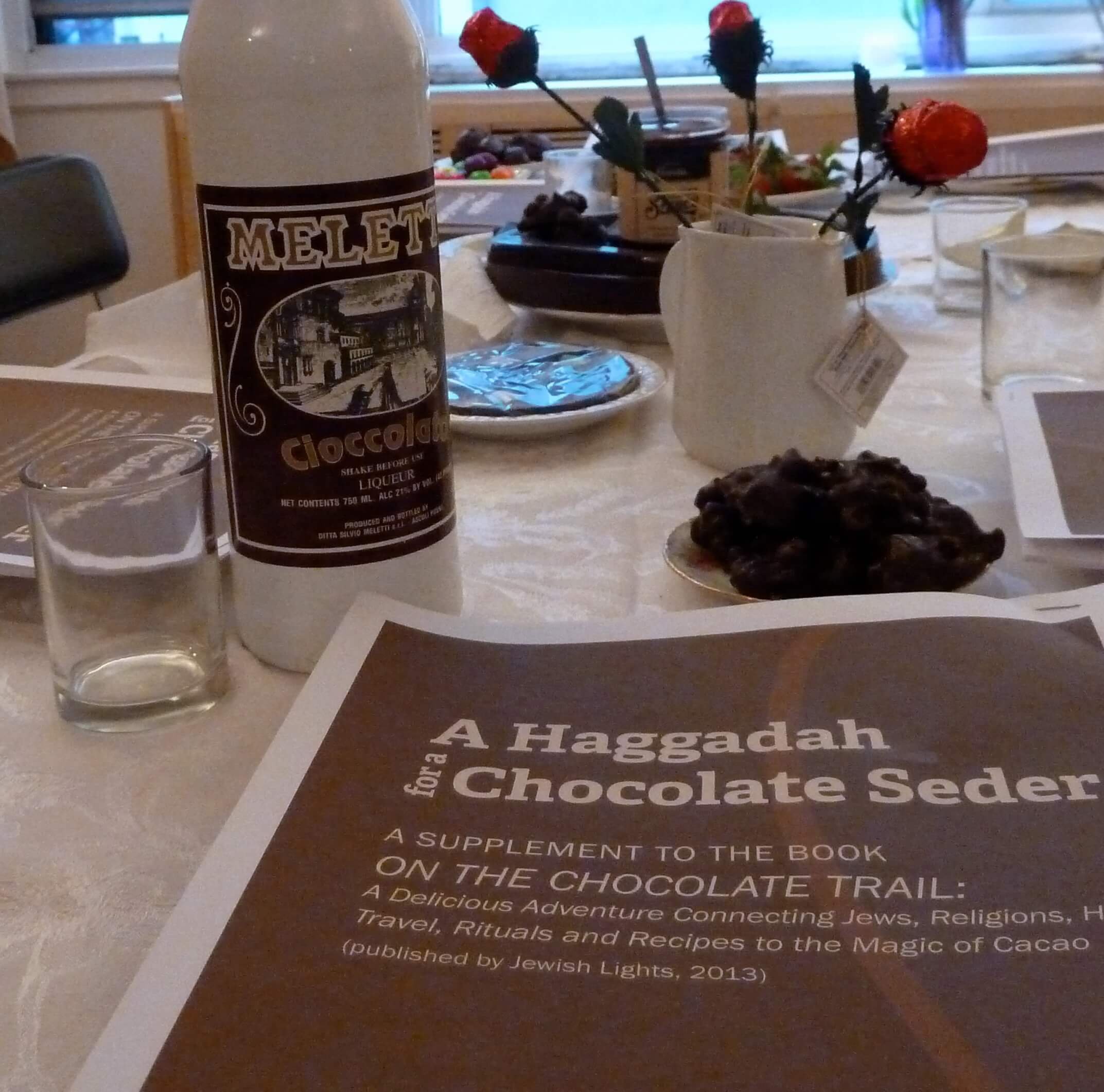What’s a Chocolate Seder & Why Does it Matter?
Editor’s note: Rabbi Deborah Prinz is the perfect person to share insights from her chocolate Hagaddah and to help explain what chocolate Seders are. A chocolate enthusiast, she previously wrote about Hanukkah gelt.
What makes this Seder ritual meal for Passover different from all other Seders? The chocolate, of course. In recent years there’s been a proliferation of chocolate Seders. Passover is the Jewish holiday that commemorates the Israelites exodus from Egypt. Celebrated for 7 days and nights, the centerpiece of the holiday are the Seders, back-to-back ritual laden dinners that involve the retelling of the exodus story with prayers, songs, and specific foods using a special book called a Hagaddah as a guide.
While Passover Seders incorporate specific roles for children, they can also be long and trying for little ones, so a chocolate Seder was created not as a replacement for a Seder, but as an additional experience geared at engaging children.
Chocolate Seder Resources
Resources for chocolate Seders include a general overview from the Union for Reform Judaism, along with a chocolate Seder Hagaddah and tips for hosting a chocolate Passover Seder. Just as there are many different traditional Seder Hagaddahs, there are various free chocolate ones including the Chocolate Seder from the Miami Beach JCC, the Ultra-Chocolatey Hagaddah from David Schwartz of Sefaria and the Chocolate Seder Hagaddah from the Congregation Shaarie Torah in Portland, Oregon, to name but a few.
A Socially Responsible Chocolate Seder
Chocolate Hagaddahs are not just for kids though. I wrote the The Haggadah for a Socially Responsible Chocolate Seder offered as a free supplement to On the Chocolate Trail, to highlight Passover’s theme of freedom from slavery by exploring exploitation in the chocolate business. Chocolate-soaked rituals discuss child labor, worker equity, fair trade, and food justice.
In the Socially Responsible Chocolate Seder I suggest schmearing chocolate into the ritual foods for the festive table: chocolate eggs (for the ritual hard boiled egg or beitzah), chocolate covered unleavened matzah, green-colored chocolate (for the parsley or karpas), a solid chocolate Seder plate, several chocolate nut/dried fruit clusters (for the charoset or mortar), and a 100% cacao bar (for the bitter maror). You could also make a chocolate covered charoset. Afflictions caused by the chocolate industry supplement the list of the 10 plagues, including: poor quality chocolate, suffering in the growing of cocoa beans, and the health problems that could result from immoderate consumption of chocolate. At the section in the Seder service that refers to the bread of poverty, this Haggadah highlights the income disparity between cocoa farmers and chocolate consumers. The U.S. Department of Labor and Tulane University studied the problem of endangered child labor, documenting that over two million children work in unsafe conditions in cocoa growing in West Africa, particularly Ghana and Ivory Coast. In addition to the traditional Four Questions, these also percolate:
How much more would we be willing to pay for slave-free chocolate?
What is the role of globalization in our chocolate?
Who are the chocolate lobbyists?
Since it is hard to find Kosher for Passover that is also Fair Trade chocolate, which chocolate should we choose?
Fortunately, due to the partnership among Ilana Schatz (Fair Trade Judaica), Rabbi Aaron Alexander (Adas Israel Congregation), and Rabbi Jill Jacobs (T’ruah: The Rabbinic Call for Human Rights) it is now possible to purchase a fairly traded, and Kosher for Passover chocolate made by Equal Exchange. Schatz explained her passion for fair trade Passover chocolate this way:
In 2010 ... I was stunned to learn that this most delicious and heavenly food was being produced by slave labor! Two things were immediately obvious: the connection to a contemporary Pesach story and the fact that there was no chocolate we could eat on Passover that wasn’t probably tainted by child labor.
Schatz also developed a “Virtual Fair Trade Chocolate at Seder” campaign with suggestions for enhancing the Seder plate of ritual foods with cocoa beans or photos of cocoa beans, cocoa pods, and/or cocoa trees. The modified Seder plate, the fairly traded chocolate for Passover, the chocolate Haggadah, all seek to harvest the fruits of productive, meaningful, and safe labors at Passover.
For this year’s Seder: Fairly traded chocolate. Next year: More fairly traded chocolate.
What exactly is fair trade? Read about Fair Trade, Direct Trade and Transparent Trade.




